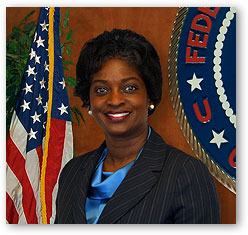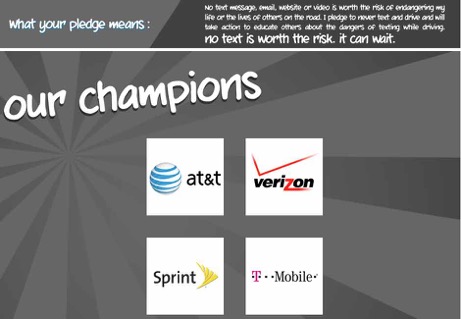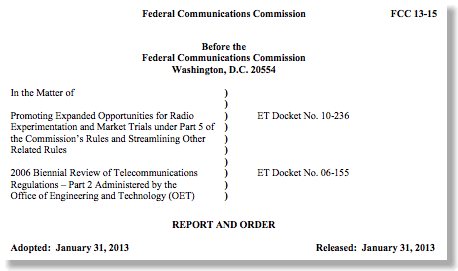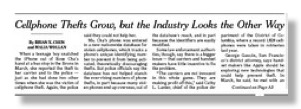Experimental License Rulemaking: It Was Supposed to Help Innovation But One Glitch is a Step Backwards!
The above Report and Order was adopted with great fanfare on January 31. Indeed the fact that the adoption date and release date is the same is an indication of its priority. Its goals and hopes are stated in the following introductory words:
By its actions today, the Commission revises and streamlines its rules to modernize the Experimental Radio Service (ERS). The rules adopted in this Report and Order will update the ERS to a more flexible framework to keep pace with the speed of modern technological change while continuing to provide an environment where creativity can thrive.
The FCC press release kvells even more:
Today’s Report and Order (R&O) expands upon and complements the existing ERS structure, in which the Commission issues individual licenses for each experiment. The new licenses will provide innovators greater flexibility in how they conduct research and development by permitting them to modify existing experiments and conduct new experiments within a broad range of frequencies, emissions, and power levels at defined geographic locations under a single license.
Support was bipartisan as Comm. Pai wrote in a statement:
For a variety of reasons including OMB review of information requirements, the R&O was not published in the Federal Register until April 29th. (78 F.R. 25138) A review of the text a few days ago by your blogger revealed a big surprise not mentioned in the glowing public statements: a key detail is actually a step backwards!Today’s item improves the existing experimental license process. It consolidates all the rules that experimenters must follow into one location: Part 5 of our rules. It also creates new opportunities for innovators to more easily conduct experiments that may lead to the next technological success. Overall, I believe that this order will encourage wireless research and development, and I am therefore pleased to support it.
Compare the long standing text of § 5.85(a) with the revised version in the R&O:
CURRENT VERSION
§ 5.85 Frequencies and policy governing their assignment.
(a) Stations operating in the Experimental Radio Service may be authorized to use any government or non-government frequency designated in the Table of Frequency Allocations set forth in part 2 of this chapter, provided that the need for the frequency requested is fully justified by the applicant.
REVISED VERSION
§ 5.85 Frequencies and policy governing their assignment.
(a) Stations operating in the Experimental Radio Service may be authorized to use any Federal or non- Federal frequency designated in the Table of Frequency Allocations set forth in part 2 of this chapter, provided that the need for the frequency requested is fully justified by the applicant, except that experimental stations may not use any frequency or frequency band exclusively allocated to the passive services (including the radio astronomy service). Stations authorized under subparts E and F are subject to additional restrictions.
Suddenly the phrase “ except that experimental stations may not use any frequency or frequency band exclusively allocated to the passive services (including the radio astronomy service)” was added to the description of what frequencies can be used. While this was in the draft rules in the NPRM, it was never discussed in the NPRM text and no reason was given for the change. Even stranger in the R&O it is discussed in para. 56 in the context of the new “program licenses”, but never discussed as a general requirement for any experimental license. Was the inclusion of the new words in § 5.85(a) simply a drafting error?
Does it matter?
For many passive bands it doesn’t. But the recent TAC meeting made clear that there is a strong FCC interest in “spectrum frontiers” at the edge of spectrum now used. Present FCC rules provide for use up to 95 GHz and implicitly forbid use above there except for experimental licenses. The recent DARPA 100G Broad Area Announcement shows that DARPA is about to spend a lot of money to develop practical millimeter wave wireless systems with capacity greater than 100Gb/s in support of military requirements and this technology is likely to spill over to civil use in areas such as mobile broadband backbone.
The US Table of Allocations provides generously for passive only allocations above 60 GHz. The problem is not the existence of these passive only allocations which have real benefits, rather initial experiments with new technology become much more complex and expensive if they have to totally avoid an emission in a passive band even if there is no passive receiver in the area that might be impacted or if the atmospheric absorption at millimeter wave frequencies really prevents the experimental signal from reaching any passive receiver.
As the date for a possible appeal of the R&O was closing quickly, using his best “jail house lawyer“ skills your blogger filed a Petition for Reconsideration this week. The petition elaborates on the above points. While even under the best of circumstances FCC will not request comment on it soon, reader are welcome to review it and comment to FCC (Docket 10-236) if they wish.
Link to FCC comment filing site
vox populi vox dei
UPDATE

The Commission’s longstanding case-by-case review process for conventional experimental licenses has provided flexibility and spectrum access to experimental programs while ensuring that the needs of co-channel users, including those in the passive bands, are adequately protected. The rule change adopted in the instant Order reverses this successful policy, putting at risk important experimental programs with little corresponding increase in interference protection for passive operations. The rule change is also procedurally deficient because it fails to provide adequate notice or a reasoned explanation to support the Commission’s reversal of policy. For these reasons, Boeing strongly urges the Commission to reconsider this change.
Boeing went beyond the MSS petition and pointed out
(T)he Commission’s records show that OET regularly grants applications for licenses and STAs in restricted bands, including the exclusive allocation passive bands identified in footnote US246. Boeing itself has sought and received experimental authority in these bands as recently as July 2013. Numerous other applicants have also received experimental licenses or STAs in these bands, including Honda Aircraft Company, LLC, the Battelle Memorial Institute, and Raytheon Missile Systems.
No evidence exists in the record of this proceeding or elsewhere that these or similar operations have caused interference to passive services. This is not surprising, given the sophistication of the parties undertaking these experiments and the extensive array of interference mitigation measures available to ensure that operations in passive spectrum do not result in interference to other users.
NBC's Today on Stolen Smart Phones - Again
Visit NBCNews.com for breaking news, world news, and news about the economy
As the cellular industry starts the 3rd and last day of CTIA 2013™ in Las Vegas accompanied by all 3 remaining FCC commissioners - who came despite the sequester although no other FCC staff came, the NBC Today show risked joining the City and County of San Francisco on the CTIA boycott list. In the segment shown above, for the second time in a little over 2 months a Today segment by Jeff Rossen highlighted violent thefts of smart phones.
This is another unintended consequence of today’s ubiquitous cell phone use. All new technologies have unintended consequences. While the cell phone industry strives to make positive contributions to our society, economy, and environment it consistently turns a near blind eye to such unintended consequences preferring “solutions” that have little or no impact on industry operations regardless of whether they actually impact the problem at hand. While I can understand a little this tendency of industry, I really don’t understand why FCC tolerates it consistently. Perhaps the new leadership will take a new look?
One real problem that prevents reliable “bricking” of stolen phones is the fact that the IMEI or “serial number” can be changed in many models. As was discussed here earlier, some privacy advocates may favor this, but consumers are ignorant of this design detail that may threaten their life. Making all smart phones reliably “brickable” would enhance public safety. Why doesn’t the cellular industry insist to its suppliers that it be done? If some people really want phones with changeable serial numbers, they should be clearly labeled as such if allowed on the market.
Below is a YouTube “film festival” of violent cell phone thefts so you can see what we are talking about. If you need more, YouTube has plenty!
(This one below is from Brussels, not US)
FCC Interregnum Begins

On Friday Chmn. Genachowski departed FCC to be replaced by Acting Chair Clyburn effective 12:01 AM Saturday. Her statement to FCC staff ended with


“Today, however, I see the FCC as home, and you, my regulatory family. Like every other family, we may disagree at times, and yes, frustrate each other. But at the end of the day, we’ve got each other’s back. We’ve got America’s back.
“So while we may face many challenges in the days and weeks ahead, by working together, we will continue to do great things. Continuity and progress: the hallmarks, the building blocks, of a great time, great people and a great agency. Thank you for all that you’ve done, and what you will continue to do, to make this nation proud.
“Thank you and Godspeed.”
A nice article on the interregnum appears in yesterday’s Politico, entitled “At FCC, Mignon Clyburn cracks the glass ceiling”. Some excerpts:
Clyburn isn’t President Barack Obama’s choice to lead the commission. That distinction goes to venture capitalist Tom Wheeler. But she’ll helm the agency as acting chairwoman until he is confirmed, a process that’s likely to drag on for months. And she’ll be in charge at a time when the agency is dealing with major decisions from media ownership to spectrum auctions to the SoftBank-Sprint deal…
An acting chair isn’t expected to break new ground but can have influence. Acting Chairman Michael Copps won accolades for restoring order after the tumultuous reign of Chairman Kevin Martin…
Wheeler’s confirmation is expected to stretch into the fall, in part because the GOP has yet to pick someone to replace former Commissioner Robert McDowell. Commission appointments usually pair a Democrat and a Republican.
Even so, it’s unlikely that Clyburn will get too far in front of Obama and Wheeler, Sohn explained.
Our congratulations to Acting Chair Clyburn on this well deserved honor!
4 Major Cellular Carriers Unite to Deter Texting While Driving
FierceWireless announced today “AT&T recruits Verizon, Sprint and T-Mobile to curb texting while driving”. AT&T started the It Can Wait website in 2012 to deter texting and driving, especially by teenagers. Sprint, T-Mo, and VZW have now joined the capping which will kick off in full on May 20. (Sprint had previously cooperated since 2010 with Oprah’s No Phone Zone website on discouraging texting use while driving.)

In addition, FierceWireless reports:
In conjunction with It Can Wait, smartphone manufacturers Pantech, HTC and Samsung will preload the AT&T DriveMode safety app on Android devices sold to AT&T subscribers. DriveMode automatically replies to incoming texts, notifying the sender that the message recipient is driving and unable to respond. The app automatically turns on when the user is in a vehicle moving at speeds in excess of 25 miles per hour, and it automatically shuts off once the vehicle falls to speeds below 25 miles per hour for five minutes.
Our congratulations to the 4 major carriers for joining together now in this valuable effort.
NTSB Chair Hersman
But to put this in perspective, we reported here in December 2011 a much broader recommendation from NTSB. Here is a statement from that time from NTSB Chair Deborah A.P. Hersman:
Note that this last sentence is simplified on the above industry website to just “No text is worth the risk”. The CTIA website says “The wireless industry defers to consumers and what they choose to support on driving legislation, whether that’s hands-free regulations or bans on talking on their mobile devices while driving.” Thus there still is a major gap between NTSB and the wireless industry, but the recent move is a positive step forward."According to NHTSA, more than 3,000 people lost their lives last year in distraction-related accidents. It is time for all of us to stand up for safety by turning off electronic devices when driving.
No call, no text, no update, is worth a human life.”
On the Next FCC Chairman

Today the White House is expected to announce the nomination of Tom Wheeler as the next FCC chairman. The following is Tom’s bio from his present firm:
Tom, congratulation on this well deserved great honor!Tom Wheeler joined Core Capital in 2005 after nearly three decades of working at the forefront of telecommunications policy and business development. As an entrepreneur, Tom founded multiple companies offering cable, wireless, and video communications services, and co-founded SmartBrief, the largest online targeted news service. As a policy expert, he has been intimately involved in the development of the government’s telecommunications policy at both the legislative and regulatory level. In 2009, he led the Obama-Biden Transition Project's Agency Review Working Group in charge of transitions for the science, technology, space and arts agencies.
On the 20th anniversary of the cable television industry (1995), Tom was selected as one of the 20 most influential individuals in the industry’s history and on the 25th anniversary of the cellular telecommunications industry (2008), he was named one of the top 10 innovators in the wireless industry. Tom was President of the National Cable Television Association (NCTA) from 1979 to 1984. After several years as CEO of various technology start-ups, including the first company to offer high-speed data to the home and the first digital video delivery service, he was asked to lead the Cellular Telecommunications & Internet Association (CTIA), where he was CEO until 2004.
President Obama appointed Tom to the President's Intelligence Advisory Board. Previously, Presidents Clinton and Bush had appointed him a Trustee of the John F. Kennedy Center for the Performing Arts. Tom is the former Chairman of the Foundation for the National Archives and Board Member of PBS. He has authored two books: Take Command: Leadership Lessons of the Civil War (Doubleday, 2000) and Mr. Lincoln’s T-Mails: The Untold Story of How Abraham Lincoln Used the Telegraph to Win the Civil War (HarperCollins, 2006).
In anticipation of the election last year and the expected change in FCC leadership no matter what the outcome, IEEE-USA prepared a nonpartisan industry-neutral set of recommendations to improve spectrum policy decision making at FCC and parallel deliberations at NTIA. We hope that nominee Wheeler and the Senate confirmation will consider these issues to help make FCC function better in key spectrum policy issues that are vital to both the telecom industry and the whole economy.
(Click below for whole 10 page position statement)
UPDATE
For 2 divergent viewpoints on the nomination:
http://www.newyorker.com/online/blogs/johncassidy/2013/05/tom--wheeler-federal-communications-commission.html
http://www.publicknowledge.org/public-knowledge-statement-tom-wheeler-chair-fcc
NY Times: "Cellphone Thefts Grow, but the Industry Looks the Other Way"
The cellular industry does may things very well. It provides high speed reliable service in many parts of our country. It provides amber alert service to help protect children. It helps those suffering from spousal abuse get cell phones for their protection. But the industry also turns a blind eye to the societal problems that are the unintentional consequences of its service. Last year’s New Year’s Resolution post compiled several of these issues. None have shown noticeable improvement.
As in many things, problems not attended to often get worse. The item at the top is an article from the front page of the May 2 New York Times with the title “Cellphone Thefts Grow, but the Industry Looks the Other Way”. One wonders if CTIA and its members will now boycott advertising in theTimes as they have boycotted San Francisco?
The article starts:
When a teenage boy snatched the iPhone out of Rose Cha’s hand at a bus stop in the Bronx in March, she reported the theft to her carrier and to the police — just as she had done two other times when she was the victim of cellphone theft. Again, the police said they could not help her.
Commenting on a record 1,829 cellphones were taken in robberies last year in Washington DC, Police Chief Cathy L. Lanier was quoted as saying, “The carriers are not innocent in this whole game. They are making profit off this.” We guess she was not very moved by CTIA’s John Walls, Vice President, Public Affairs who made this YouTube video last year to show how concerned the industry was about this issue after CTIA felt the Today Show misrepresented their position:
March 2012 Today Show segment on cell phone thefts:
Visit NBCNews.com for breaking news, world news, and news about the economy
CTIA response to Today segment the same day:
While CTIA statements on cellphone theft usually focus on protecting private information on the phone, the large number of thefts raises concerns about violence and contribution to growing crime rates. According to the Times,
In San Francisco last year, nearly half of all robberies involved a cellphone, up from 36 percent the year before; in Washington, cellphones were taken in 42 percent of robberies, a record. In New York, theft of iPhones and iPads last year accounted for 14 percent of all crimes.
Some compare the epidemic of phone theft to car theft, which was a rampant problem more than a decade ago until auto manufacturers improved antitheft technology.
The Times article point out that one complexity that limits owner from making stolen phones nonfunctional by remote controls that the International Mobile Station Equipment Identity of many phones can be hacked, making the stolen phone impossible to identify. On this issue, the cell phone industry is not the only party at fault. Some privacy advocates view this ability to change identity as a good thing. The article states:
Some industry experts say consumers should have the right to modify their phones’ identification features to avoid being tracked.
The right to change the identification is a “pro-privacy measure,” said Seth Schoen, a senior staff technologist at the Electronic Frontier Foundation, a technology-oriented civil liberties group in San Francisco.
While your blogger often agrees with EFF on issues, in this case they have oversimplified the problem. Freedom from being mugged for your smart phone is as important as freedom of your children to go to school without fear of a gunman killing their classmates.
If some people want to change their IMSEIs from time to time for privacy reasons, no doubt a niche market, perhaps such phone should be available and clearly identified as such. Buyers more concerned about muggings - we suspect a much greater portion of the market - could then buy phones with permanent IMSEIs just as we regularly buy cars with permanent VINs. (It would probably be convenient for some to have cars where you can change the license plates by remote control as in James Bond movies but I am not aware of any jurisdiction that allows that.)
In any case, it looks like FCC will have to make a policy decision whether some or all IMSEIs should be permanent as intended. The industry may not be interested in such a proceeding at FCC, but the public safety demands that all options be considered in an open and transparent process.






![Validate my RSS feed [Valid RSS]](valid-rss-rogers.png)

